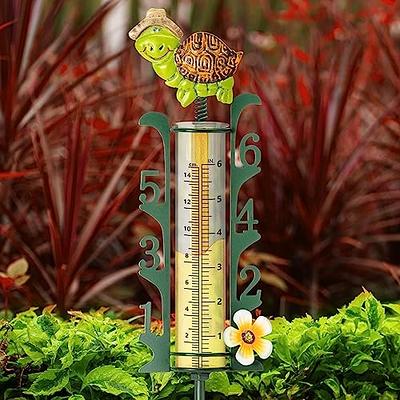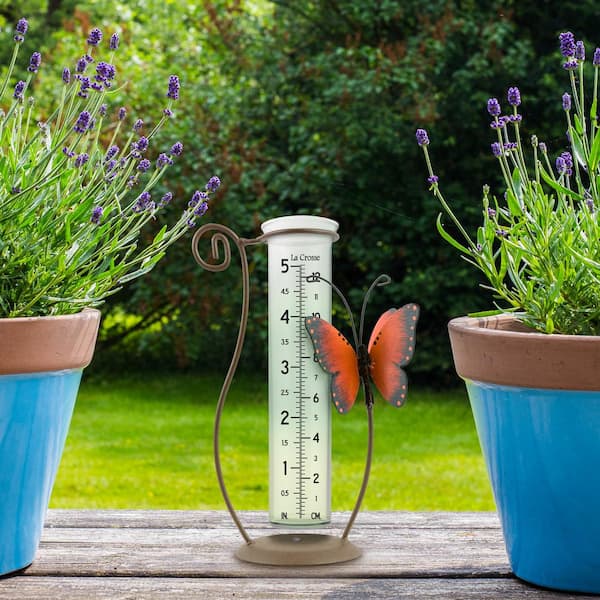The Rain Gauge: Analyzing Rainfall Patterns and Enhancing Climate Awareness
The Rain Gauge: Analyzing Rainfall Patterns and Enhancing Climate Awareness
Blog Article
How to Choose the Right Rainfall Scale for Accurate Rainfall Information
Exact rainfall information is essential for different markets and tasks, such as weather forecasting, water, and farming resource monitoring. To acquire dependable dimensions, it is important to choose the best rainfall scale. This guide aims to give beneficial understandings right into the choice process, permitting you to make informed choices. Taking into consideration aspects such as area, kind, and precision of the rain scale will certainly aid ensure precise data collection. Furthermore, recognizing the upkeep and calibration procedures will add to the durability and dependability of your rainfall gauge. By following these guidelines, you can make certain exact rainfall information, allowing better decision-making and preparation for various applications.
Significance of Selecting the Right Rainfall Gauge
The value of choosing the appropriate rainfall gauge hinges on obtaining dependable and exact rains information for precise meteorological evaluation. Rain information is vital for a wide variety of applications, consisting of weather condition forecasting, hydrological modeling, and environment research. Imprecise or undependable data can lead to erroneous verdicts and flawed decision-making procedures.

Second of all, the precision and accuracy of the rain gauge are critical. The scale must be able to determine rainfall with high accuracy, capturing also little amounts of precipitation accurately.
Additionally, the area and installment of the rain gauge are crucial considerations. It should be positioned in an open area, far from obstructions that could impact rainfall dimensions. The scale needs to be positioned at a suitable elevation and angle to avoid splashing and ensure correct catchment of rain.
Aspects to Consider When Selecting a Rainfall Scale
When picking a rainfall scale, there are numerous essential aspects to take into consideration. These elements can significantly influence the accuracy and reliability of the rains information accumulated. The first aspect to think about is the kind of rain gauge. There are different kinds available, consisting of standard rain evaluates, tipping bucket rainfall determines, and evaluating rainfall determines. Each type has its own advantages and disadvantages, so it is essential to choose one that finest fits your details needs and demands.
One more aspect to think about is the product of the rain gauge. Rain determines can be made of various products, such as steel, plastic, or glass. The material selected ought to be resistant and resilient to climate condition, making sure that the rain scale will certainly stand up to the aspects and give precise dimensions with time.
Accuracy is likewise an essential element to consider. Look for rainfall gauges that have been adjusted and tested for accuracy. Functions such as anti-splash rings and funnels can also enhance the precision of the measurements.

Finally, consider the environment and environment in which the rain gauge will certainly be used. Various rainfall evaluates appropriate for different environments, so it is necessary to select one that is appropriate for the conditions in your area.
Various Sorts Of Rain Determines Offered
To additionally discover the aspects to think about when choosing a rainfall scale, it is crucial to recognize the various types of rain browse this site gauges available. The most usual type is the standard rainfall scale, likewise recognized as the round rainfall gauge.
Another sort of rainfall gauge is the tipping pail rain scale. This scale makes use of a seesaw-like device to collect and determine rainfall. As the rainfall falls under the scale, it fills up one side of the container, creating it to tip and clear the water. The number of ideas is counted online to identify the amount of rains. Tipping bucket rain assesses are prominent for their precision and ability to measure rainfall intensity.
A 3rd kind of rain scale is the evaluating rain scale. As the rainfall drops into the scale, it is gathered in a container connected to an equilibrium.
Ultimately, there are also remote rain evaluates that usage advanced technology to measure rains (The Rain Gauge). These evaluates usage sensors and transmitters to send data wirelessly to a central unit. Remote rainfall evaluates are hassle-free for checking rains in hard-to-reach areas or for large-scale information collection
Exactly How to Establish the Accuracy of a Rain Scale
One method to evaluate the precision of a rain gauge is by conducting routine calibration dimensions. Calibration entails comparing the readings of a rain scale to a basic dimension, such as a licensed rainfall scale or a weather terminal with high accuracy. By contrasting the dimensions, any kind of discrepancies or inaccuracies in the look at this now rainfall gauge can be identified and represented.
To perform a calibration measurement, begin by collecting rainfall data from both the rain scale and the typical measurement tool over a particular period, such as a month. After that, compare the analyses and determine the difference in between them. This distinction is recognized as the calibration error.
It is essential to note that calibration dimensions need to be done on a regular basis, as environmental factors, such as temperature level, wind, and debris, can influence the accuracy of the rainfall gauge gradually. By performing routine calibrations, any kind of modifications in the accuracy of the rain scale can be detected and description modifications can be made as necessary.
In addition to calibration, it is also advised to tidy and keep the rainfall scale consistently to guarantee its accuracy. Get rid of any type of particles or obstructions that may affect the precision of the dimensions, and inspect for any type of indications of damage or use that might call for repair work or replacement.
Tips for Maintaining and Calibrating Your Rainfall Scale
Regular upkeep and calibration are critical for ensuring the accuracy and integrity of your rainfall scale in determining rains data (The Rain Gauge). By following a few basic suggestions, you can make sure that your rainfall gauge is correctly preserved and adjusted
Firstly, it is very important to clean your rainfall scale on a regular basis to avoid any debris or dust from obstructing the rainfall collection mechanism. Use a mild cleaning agent and a soft brush to carefully clean up the within and exterior of the scale. Rinse it completely with tidy water and permit it to completely dry totally prior to re-installing it.
Second of all, it is suggested to calibrate your rain gauge a minimum of yearly. Calibration involves comparing the dimensions of your rainfall scale with those of a trusted and precise referral scale. This will help you determine and correct any type of prospective errors in your rainfall gauge's measurements.
To adjust your rainfall gauge, collect a known quantity of water utilizing a determining container and contrast it with the measurements videotaped by your rain gauge. Adjust the readings as necessary to ensure accuracy.

Conclusion
To conclude, picking the ideal rain scale is vital for acquiring accurate rains information. When selecting a rain scale, variables such as area, purpose, and budget need to be taken into consideration. There are numerous kinds of rain gauges readily available, each with their own advantages and restrictions. It is necessary to routinely maintain and adjust your rain scale to ensure its accuracy. By adhering to these guidelines, exact rainfall information can be obtained for numerous applications.
There are various types available, including standard rainfall determines, tipping bucket rain gauges, and evaluating rainfall evaluates.To even more discover the variables to think about when choosing a rain scale, it is important to comprehend the various types of rain assesses available. The most typical type is the conventional rainfall gauge, likewise known as the round rainfall gauge.An additional type of rainfall gauge is the tipping container rain gauge. Calibration entails comparing the readings of a rain gauge to a common dimension, such as a certified rainfall scale or a weather terminal with high precision.
Report this page